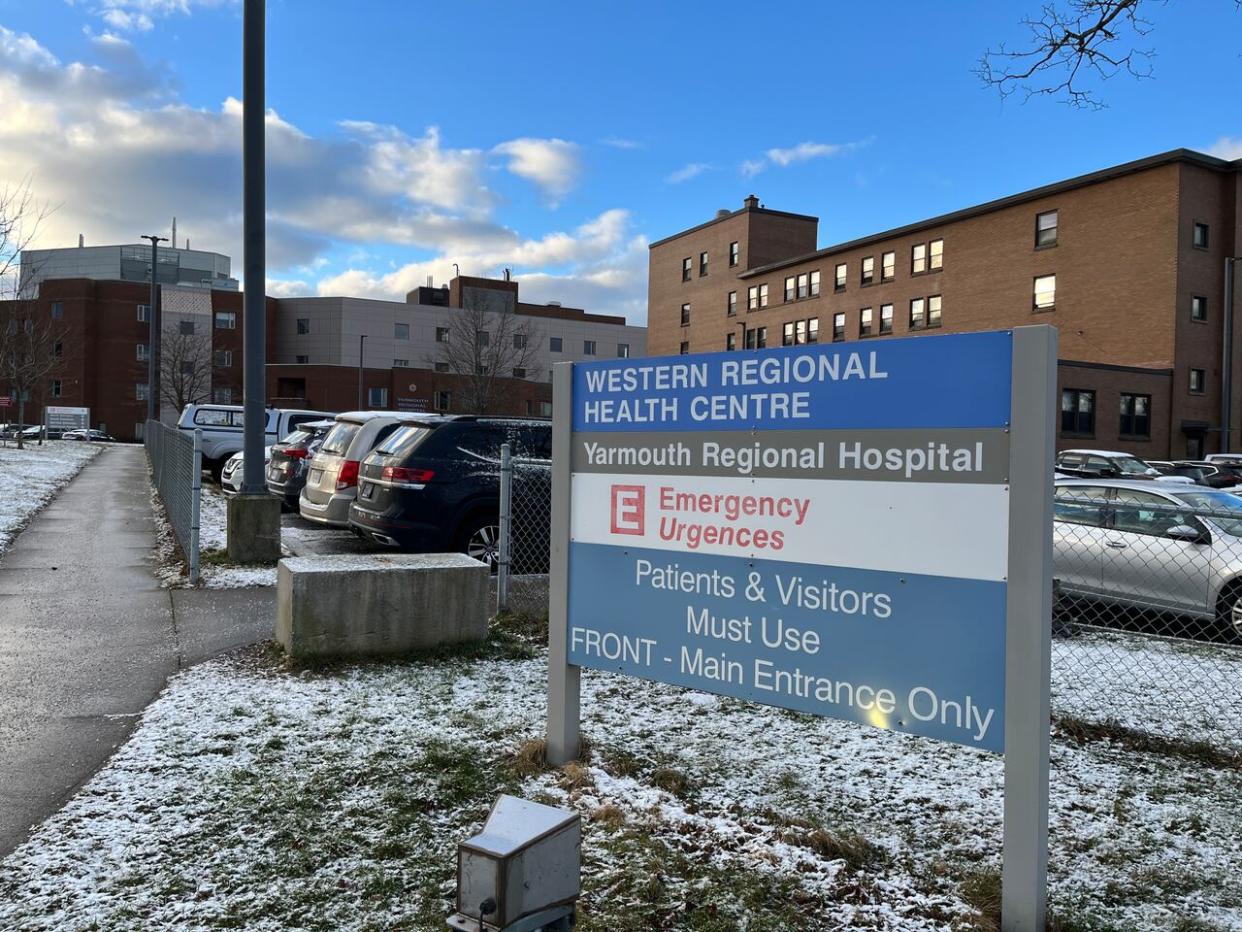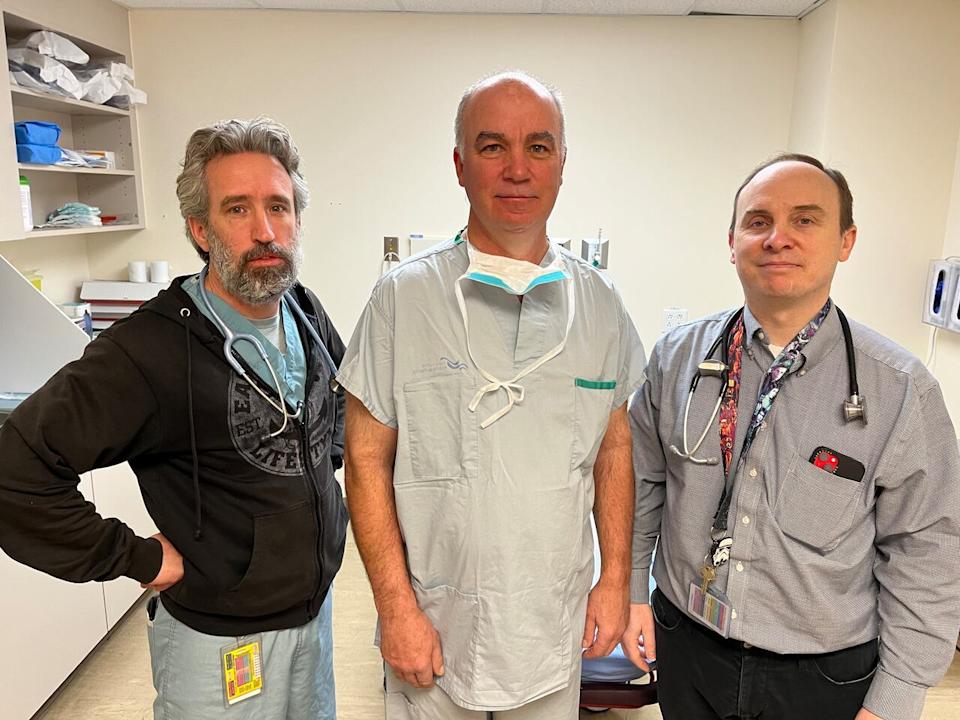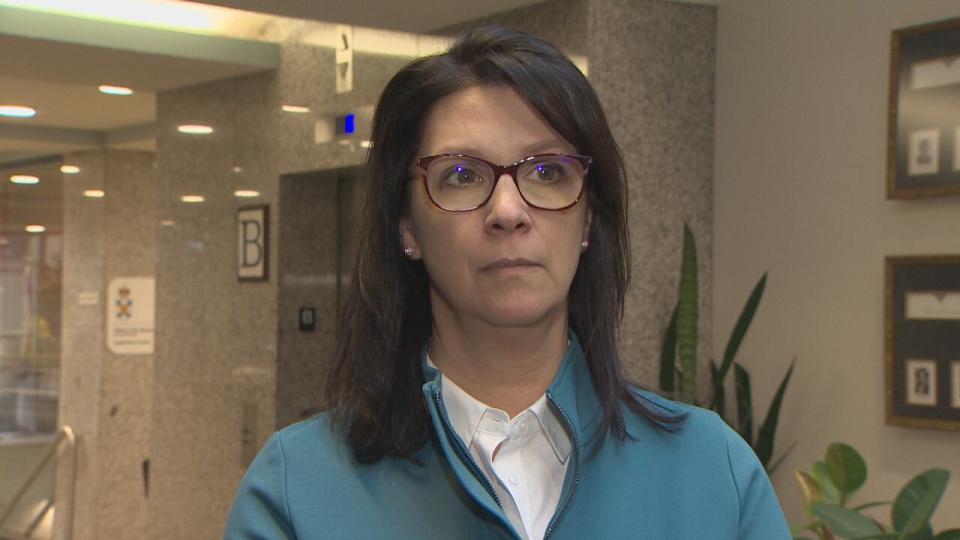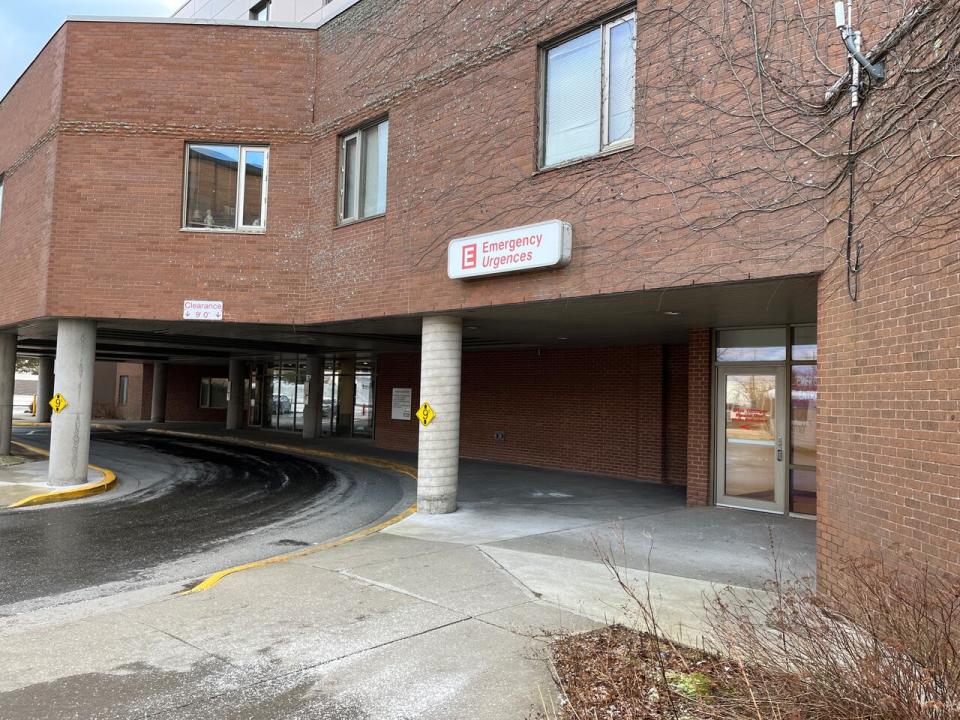Yarmouth doctors call for concrete timelines to replace 'inadequate' emergency department

Since starting work as an emergency medicine physician at Yarmouth Regional Hospital in 1990, Dr. Paul Legere has seen an increase in the number of patients coming through the doors, along with greater needs.
"It's a gradual thing, but when you look back it's a big number," he said during a recent interview before starting his shift.
Legere and his colleagues at the hospital have done what they can to accommodate those changes. Waiting rooms and other areas have been taken over to try to provide more space, but there are still days when every stretcher and chair in the department is filled to the point where there isn't enough space to see patients, he said.
It's not uncommon for the hospital to be at 125 per cent capacity or higher, and for patients to sometimes wait upwards of 10 to 12 hours to be seen in the emergency department.
"We're just moving wherever we can find space to put patients, because we're just out of space," said Legere.
"What we have now is inadequate space for housing patients and seeing patients."

Dr. Joe Gillis (from left), Dr. Paul Legere and Dr. Brian Moses all say the emergency department at Yarmouth Regional Hospital no longer meets the needs of patients and staff. (Michael Gorman/CBC)
He and others hoped that would have changed by now.
Almost four years ago, then-premier Stephen McNeil travelled to Yarmouth where he announced plans for a new emergency department double the size of the present site. In October of 2020, the former government committed money for the design and analysis work required for the project.
But the tender for that work was not awarded until February of 2022, with the final documents being delivered late last year.
Dr. Joe Gillis, a family doctor who also does emergency department shifts and serves as the medical lead for Yarmouth Regional, said he and his colleagues would like to see a concrete plan with timelines so they know what to expect. The excitement of an announcement four years ago has been tempered by the realities of the existing space, he said.
"It's a regional centre and we really need that to function as a regional centre," said Gillis.
"I think we're all sitting in sort of limbo here in some ways, waiting for things to happen."
Things have become so cramped that doctors are seeing patients in areas that were never intended to be used for treatment, said Gillis. In some cases, there's nothing more than a curtain between one patient and the next. It's a situation that Gillis said creates "huge" concerns for patient privacy and infection control.
"We come to work everyday, look to work hard and try to do the best we can. But certainly in a more functional environment would be helpful."

Nova Scotia Health Minister Michelle Thompson says now that design work for the project is complete, it will go through the normal due diligence required before next steps are announced. (CBC)
Health Minister Michelle Thompson acknowledged in an interview last week that the design work took longer than planned. Now that it's complete, the project will move through the next part of the process that all capital construction projects follow, she said, ultimately awaiting approval from the government for funding.
"We have to move to the next step and do due diligence and then we'll have an update based on that," said Thompson.
"Of course we know that there's a need there and now we've moved to the next step."
As a regional hospital, the site in Yarmouth provides services for people in the neighbouring communities of Shelburne and Digby — sites where emergency department closures are common — and sometimes as far away as Kentville and Bridgewater.
Dr. Brian Moses, an internist who is often in the emergency department for consultations, said the cramped nature of the space means it can be difficult for him to find room to even get on a computer to look up blood work or make notes.
"And so you're wandering around, circling the unit, trying to find somewhere just to get your work done," he said.
"It's like a dungeon.… It's a very unpleasant environment."

The entrance to the emergency department at Yarmouth Regional Hospital. Doctors who work there say space constraints affect patient privacy and infection control. (Michael Gorman/CBC)
And while it's a difficult space for staff, it's even worse for patients, said Moses.
The lack of space means that when a patient in Digby or Shelburne needs to see him, they can only be transferred if there is capacity in Yarmouth. Until room opens up, they're left to wait in their local hospital.
"As a care provider, that's very frustrating," said Moses.
"We go into this business of health care to try to help people. So when people are suffering, it is very emotionally challenging as a provider to know that you can do something for that patient but you can't because they're an hour away and you can't bring them down because there's no space for you to see them."
It's been two decades since the last major renovation to the emergency department and even then the space didn't change, said Legere.
The design work calls for a new building that would be attached to the hospital. It would be a more open space that takes into account patient privacy and movement, and provides "more space and better space" for staff to do their work, he said.
"The impact, particularly on patients, would be huge."
MORE TOP STORIES


